Angle grinders are a versatile and reliable power tool that can be used for a wide range of tasks. But can you use an angle grinder as a sander? This article will look at the answer to this question, exploring how it works and what types of materials it is suitable for. We’ll also provide some useful tips on how to get the most out of your angle grinder when sanding. Read on to learn more about this handy tool and its uses!
Method 1: Use a Flap Disc
One way to use an angle grinder as a sander is by attaching a flap disc. A flap disc is made up of several overlapping pieces of sandpaper, and it fits onto the grinding wheel like a normal cutting or grinding disc. Flap discs are available in various grits, from coarse (for rapid material removal) to fine (for a smooth finish).
One of the advantages of using a flap disc is that it can be used to sand in tight spaces and contours. The overlapping pieces conform to the shape of the surface, allowing you to get into nooks and crannies that would otherwise be difficult to sand.
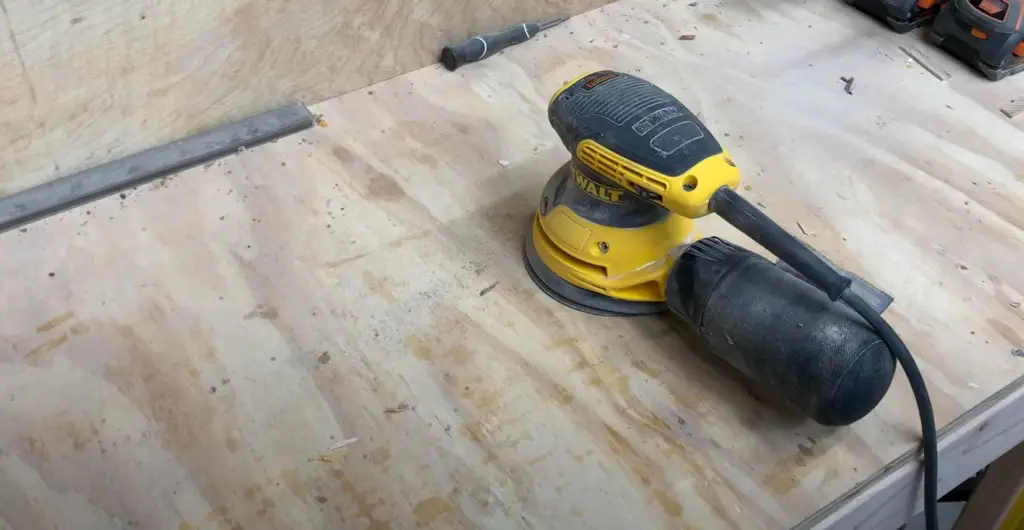
Type of Flap Disc
Flap discs come in a variety of sizes and styles, and the type you use will depend on the material you are sanding. The most common types are:
- Zirconia – This is a hard-wearing abrasive material that is suitable for metal applications such as steel and stainless steel. It can also be used on wood, plastic and fiberglass.
- Alumina – This is a medium-hard abrasive material that is suitable for sanding softer materials such as wood, plastics and fiberglass. It can also be used for some light metal applications, although it is not as hard-wearing as zirconia.
- Ceramic – This is a very hard abrasive material that is suitable for sanding metal applications such as steel and stainless steel. It can also be used on wood, plastic and fiberglass, although it may not have quite the same level of performance as the other types. [1]
Disc Size
The size of the disc you use will depend on the material and application. Generally, a larger disc should be used for metal applications, while a smaller one can be used for softer materials such as wood or plastic.
Grit Size
The grit size of a flap disc is also important. A lower grit will provide a coarse finish, while a higher grit will give you a finer finish. When sanding metal applications, it is best to start with a medium or fine grit and work your way up to the desired finish. For softer materials such as wood or plastic, you may want to start with a fine or extra-fine grit. [1]
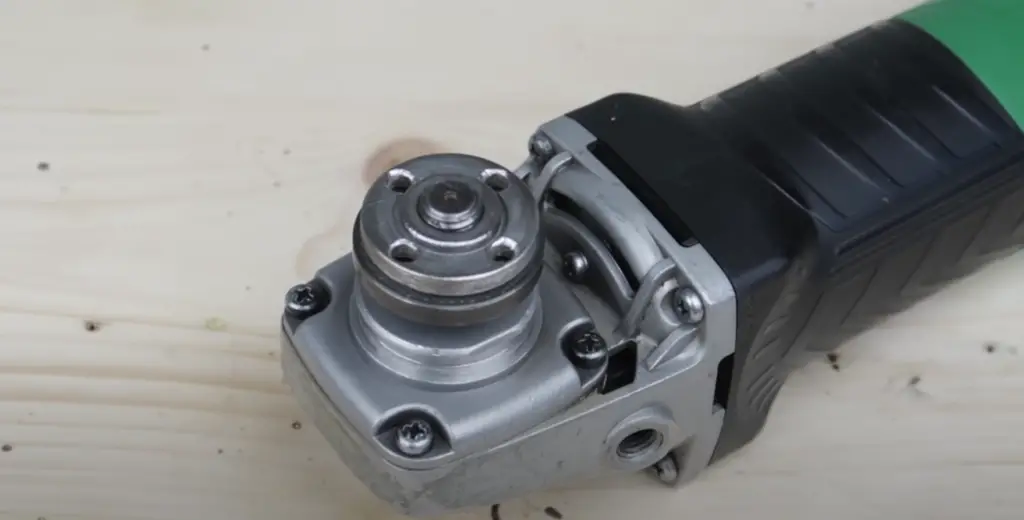
Method 2: Orbit Sander Attachment for Angle Grinder
Besides the flap disc, you can also use an orbit sander attachment for your angle grinder. This is particularly useful when sanding down large surfaces. The attachment works on a similar principle to the flap disc but it offers more control over the finish.
An orbit sander attachment typically comes with different grits and a few discs depending on the manufacturer. You will also need to use a backing plate which fits your angle grinder and allows you to attach the sander onto it.
Advantages of using an orbit sander attachment include not having to change discs frequently, as well as getting a much finer finish in comparison to the flap disc. [1]
How to Use an Angle Grinder to Sand?
Step-1: Attach the Flap Disc
The first step to using an angle grinder as a sander is to attach the flap disc. The purpose of the flap disc is to sand down surfaces that are uneven or have rough edges. To attach the flap disc, simply insert it into the spindle end of your angle grinder and tighten it with a wrench. [2]
Step-2: Wear Safety Equipment
Before turning on the angle grinder, make sure to wear safety equipment such as goggles and protective gloves. This will help protect you from any flying debris or sparks that may occur while sanding. [2]
Step-3: Match the Angles
When sanding with an angle grinder, it is important to match the angle of the flap disc to the surface that you are working on. This will ensure that the sander is able to remove material evenly and quickly. To do this, simply hold the angle grinder against the surface at a shallow angle while moving in a circular motion. [2]
Step-4: Let the Disc Do the Work
Finally, let the disc do its job. Once the angle grinder is in position, gently apply pressure while moving it in a circular motion to sand away at the surface. Remember to use light pressure and keep your hands as steady as possible while sanding. [2]
Step-5: Finish Sanding
To finish sanding, release the pressure and slowly move the angle grinder away from the surface.
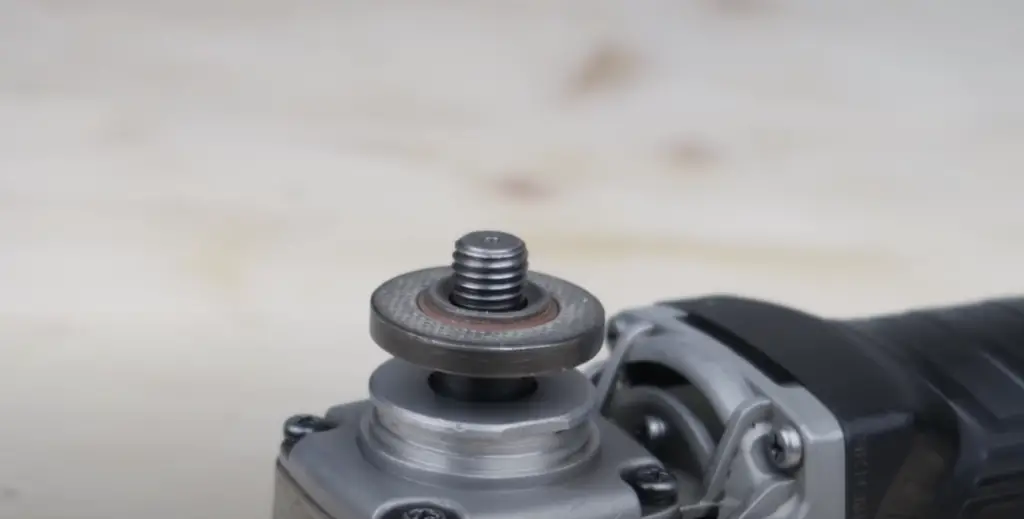
Other Disks Which Are Good for Sanding
Step 1: Get yourself a foam disk
Foam disks are specially designed for sanding and polishing. They have a soft surface that is perfect for smoothing out surfaces without scratching or damaging them. These foam disks can be found at most home improvement stores and hardware stores and come in a variety of sizes to fit any angle grinder. [1]
Step 2: Stick Sand Paper on it
Sandpaper is a great choice for sanding purposes as it is cost effective and can last longer than foam disks when used correctly. To attach the sandpaper, simply fold it in half and place on the disk. Make sure to press firmly so that the adhesive backing will stick to the foam disk, allowing you to finish your project with ease. [1]
Step 3: Cut Extra Areas
An angle grinder is a great tool for cutting and grinding extra areas, such as corners or edges. It can also be used to sand difficult surfaces that may not be accessible by the foam disk. To use an angle grinder, you should wear protective gear, such as goggles and gloves, and start by setting the disc to a lower speed before gradually increasing it. [1]
Step 4: Finish with Abrasives
For a smoother finish, you can use abrasive materials such as steel wool or scouring pads. These will help to remove any remaining rough spots and give your project a professional looking finish. You should always wear protective gear when handling abrasives and be sure to follow the manufacturer’s instructions. [1]
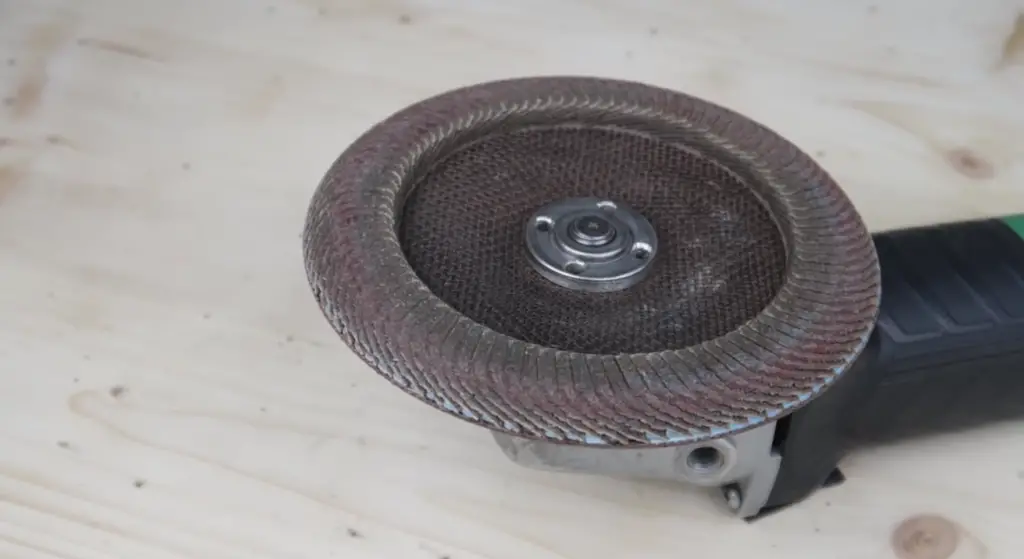
Pros & Cons of Using Angle Grinder as a Sander
Using an angle grinder as a sander is possible, but it is important to know the pros and cons before making your decision.
The biggest pro of using an angle grinder for sanding is that it can be done quickly. The abrasive nature of the grinding wheel makes it easy to remove material quickly and efficiently. This can be especially useful if you need to remove rust or paint from a large surface area quickly.
Another pro of using an angle grinder as a sander is that it is cost-effective. You don’t need to purchase specialized sanding tools, as most angle grinders come with various attachments and accessories that make them very versatile.
However, there are some cons to using an angle grinder as a sander. The biggest con is safety; the power and speed of the grinding wheel can make it dangerous if you’re not careful. It’s important that you wear protective gear when operating an angle grinder, such as long pants, closed-toe shoes, and safety glasses or goggles.
In addition, it can be difficult to get an even finish when using an angle grinder for sanding. The grinding wheel is designed to remove material quickly, which means it may leave marks in the surface if you’re not careful. [1]
Things to Remember When Sanding Wood
Use Dust Mask
The high-speed rotation of the angle grinder can create a lot of dust, so it is best to use a dust mask when sanding. A mask will help protect you from inhaling any fumes or particles that might be created. [2]
Wear Eye Protection
Eye protection is a must when using any type of power tool. The angle grinder produces sparks and flying debris, so you should always wear protective goggles or a face shield to protect your eyes. [2]
Start With Coarse Grit Paper
When sanding with an angle grinder, it’s best to start with a coarse grit paper. This will help you quickly remove any material that needs to be removed, such as paint or rust. You can then progress to finer grades of sandpaper for a smoother finish. [2]
Use Moderate Speed on Machine
It is important to use a moderate speed when using the angle grinder. This will help ensure that you don’t damage the surface of the wood or create too much dust. If you are working on a softwood, it is best to reduce the speed even further. [2]
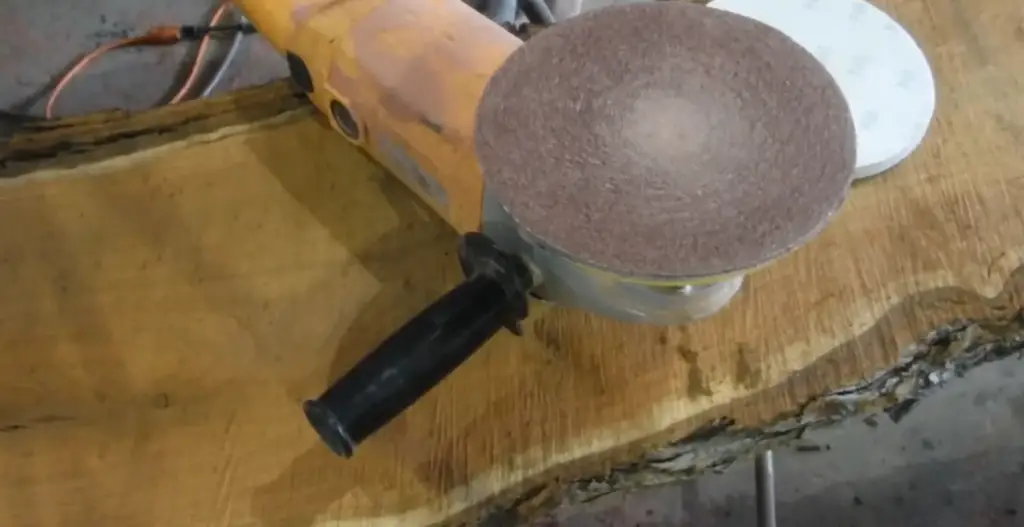
Watch Out For Nails and Staples
You should always be aware of any nails or staples when using an angle grinder as a sander. If you hit one, the angle grinder can kick it back at you with great force, so it’s best to check for these before sanding. [2]
FAQ
Is it OK to use an angle grinder on wood?
Yes, you can use an angle grinder on wood, but there are a few things to consider. First of all, the wood should be dry and free from any coating that could clog up the disc or cause it to catch fire if used for too long. You should also make sure you are using an appropriate grinding disc; many discs are designed for metal, and using them on wood could create a lot of dust. Finally, it’s important to take safety precautions when using any electric tool; make sure you wear protective goggles, gloves, and long sleeves as well as read the instructions that come with your angle grinder.
Can you sand the floor with an angle grinder?
Yes, you can use an angle grinder as a sander to sand the floor. However, it’s important to make sure you have the right disc; many discs are designed for metal and could cause a lot of dust when used on wood or other materials. It’s also important to note that an angle grinder can’t do the same job as an orbital sander, so if you are looking for a smooth finish on your floor, it’s best to use an orbital sander. Finally, make sure you wear protective goggles, gloves, and long sleeves when using any electric tool.
What should you not use an angle grinder for?
An angle grinder is not designed for cutting or sanding wood, and you should never use it on any type of material that could clog up the disc. In addition, angle grinders generate a lot of heat when in use, so you should never use an angle grinder to cut plastic or other heat-sensitive materials. Finally, angle grinders are designed for metal grinding and should never be used on masonry or stone. It’s important to read the instructions that come with your angle grinder before using it on any material.
What not to do with an angle grinder?
When using an angle grinder, it’s important to follow safety precautions. Never use an angle grinder without wearing protective goggles, gloves, and long sleeves. Additionally, you should never force the disc into material; this can cause it to catch fire or jam up. Finally, make sure to turn off the power before changing out the disc or making any adjustments.
Why are 9 inch grinders banned in Australia?
Nine-inch angle grinders are banned in Australia due to safety concerns. These grinders have a higher speed than other types of angle grinders and can result in serious injury if used incorrectly. Additionally, nine-inch angle grinders generate more heat than smaller models, which means they should not be used on any material that is heat sensitive. As such, they are not allowed in Australia.
What else can you use an angle grinder for?
An angle grinder is a versatile tool that can be used for various tasks. In addition to grinding and sanding, an angle grinder can be used to cut metal (with the right disc), polish surfaces, and even sharpen blades. It’s important to note that you should always use the right type of disc for each task; some discs are designed for metal grinding, while others are better suited for cutting or sanding. Also, make sure to wear protective gear and read the instructions that come with your angle grinder before using it.
What are three 3 uses for an angle grinder?
An angle grinder can be used for a variety of tasks, including grinding, sanding, cutting metal, polishing surfaces, and sharpening blades. When using an angle grinder, it’s important to use the right disc for each task; some discs are designed for metal grinding while others are better suited for cutting or sanding. Additionally, it’s important to take safety precautions when using an angle grinder; make sure to wear protective goggles, gloves, and long sleeves as well as read the instructions that come with your angle grinder.
Useful Video: How to Convert Angle Grinder to sander | How to Make Wooden Disc Sander For Angle Grinder
Conclusion
In conclusion, using an angle grinder as a sander can be a useful tool for sanding hard to reach areas or preparing metal surfaces for painting. However, it is important to exercise caution when using an angle grinder in this capacity, as it is designed primarily for cutting and grinding operations. Safety glasses should always be worn during use, and the user should always ensure that the angle grinder is securely mounted to a stable workbench or surface. Additionally, an appropriate sanding disc must be selected in order to prevent damage to surrounding surfaces. With these precautions in mind, you can use your angle grinder for more than just grinding and cutting applications. Happy sanding!
References
- https://www.finepowertools.com/grinders/sanding-with-grinder/
- https://woodjunctions.com/how-to-use-angle-grinder-for-sanding-wood/






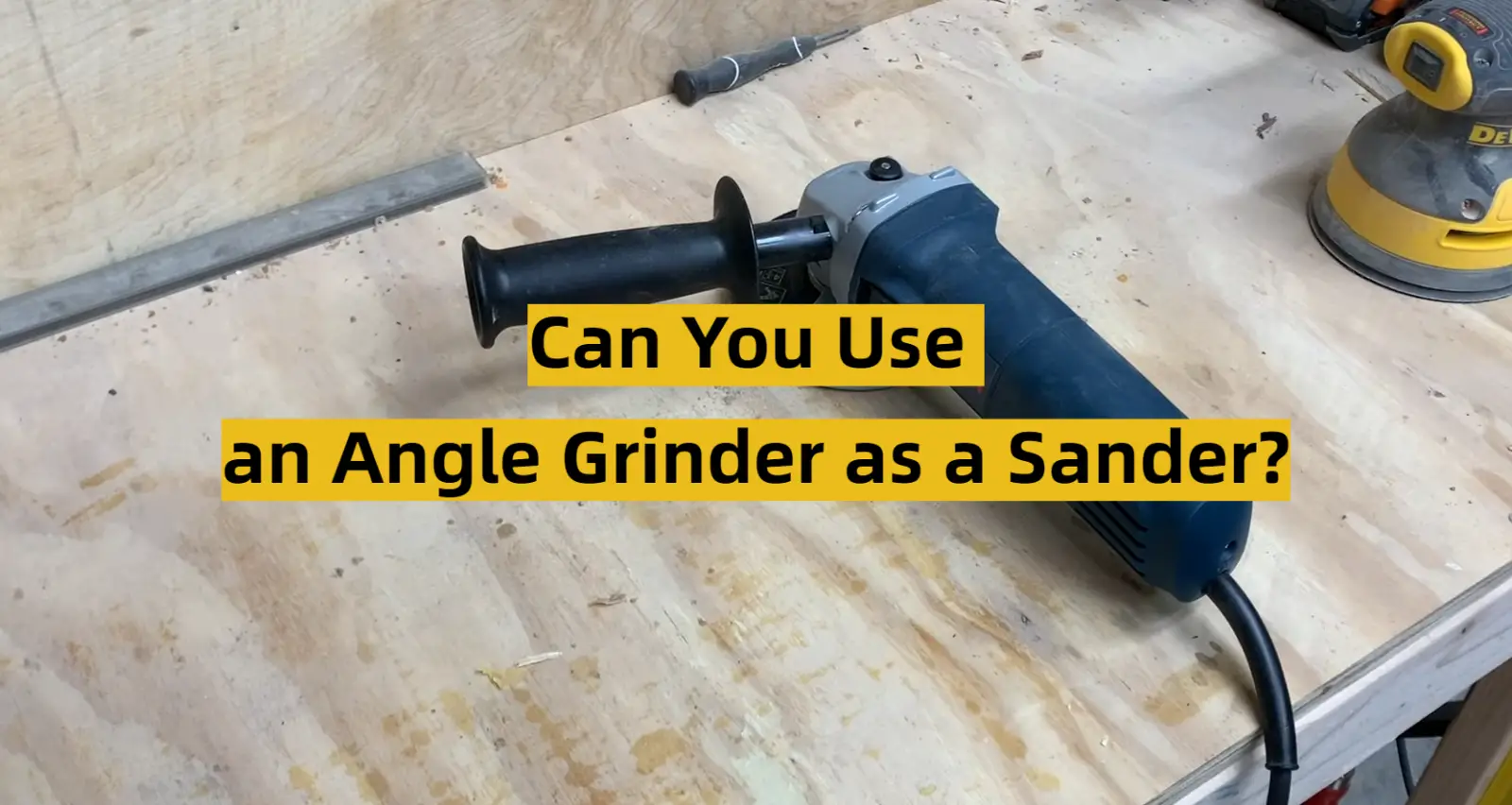




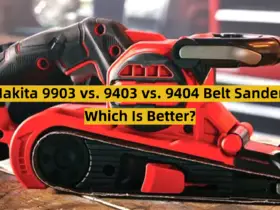

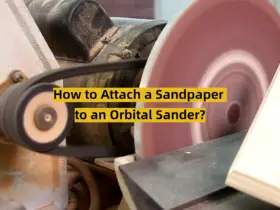
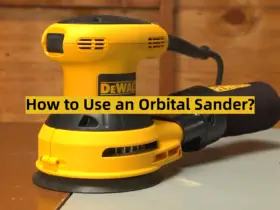
Leave a Reply